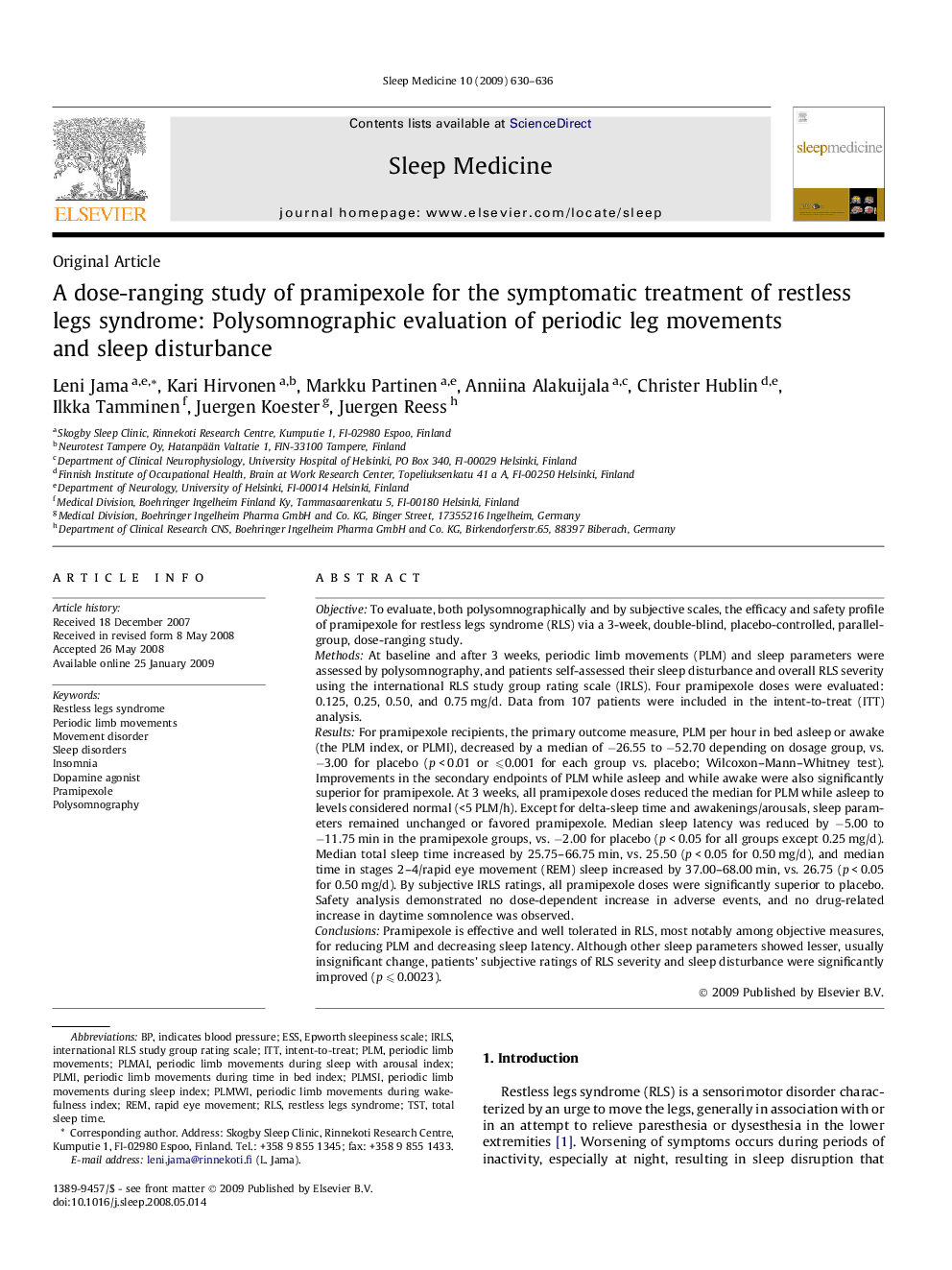| کد مقاله | کد نشریه | سال انتشار | مقاله انگلیسی | نسخه تمام متن |
|---|---|---|---|---|
| 3177588 | 1200308 | 2009 | 7 صفحه PDF | دانلود رایگان |

Objective: To evaluate, both polysomnographically and by subjective scales, the efficacy and safety profile of pramipexole for restless legs syndrome (RLS) via a 3-week, double-blind, placebo-controlled, parallel-group, dose-ranging study.Methods: At baseline and after 3 weeks, periodic limb movements (PLM) and sleep parameters were assessed by polysomnography, and patients self-assessed their sleep disturbance and overall RLS severity using the international RLS study group rating scale (IRLS). Four pramipexole doses were evaluated: 0.125, 0.25, 0.50, and 0.75 mg/d. Data from 107 patients were included in the intent-to-treat (ITT) analysis.Results: For pramipexole recipients, the primary outcome measure, PLM per hour in bed asleep or awake (the PLM index, or PLMI), decreased by a median of −26.55 to −52.70 depending on dosage group, vs. −3.00 for placebo (p < 0.01 or ⩽0.001 for each group vs. placebo; Wilcoxon–Mann–Whitney test). Improvements in the secondary endpoints of PLM while asleep and while awake were also significantly superior for pramipexole. At 3 weeks, all pramipexole doses reduced the median for PLM while asleep to levels considered normal (<5 PLM/h). Except for delta-sleep time and awakenings/arousals, sleep parameters remained unchanged or favored pramipexole. Median sleep latency was reduced by −5.00 to −11.75 min in the pramipexole groups, vs. −2.00 for placebo (p < 0.05 for all groups except 0.25 mg/d). Median total sleep time increased by 25.75–66.75 min, vs. 25.50 (p < 0.05 for 0.50 mg/d), and median time in stages 2–4/rapid eye movement (REM) sleep increased by 37.00–68.00 min, vs. 26.75 (p < 0.05 for 0.50 mg/d). By subjective IRLS ratings, all pramipexole doses were significantly superior to placebo. Safety analysis demonstrated no dose-dependent increase in adverse events, and no drug-related increase in daytime somnolence was observed.Conclusions: Pramipexole is effective and well tolerated in RLS, most notably among objective measures, for reducing PLM and decreasing sleep latency. Although other sleep parameters showed lesser, usually insignificant change, patients’ subjective ratings of RLS severity and sleep disturbance were significantly improved (p ⩽ 0.0023).
Journal: Sleep Medicine - Volume 10, Issue 6, June 2009, Pages 630–636